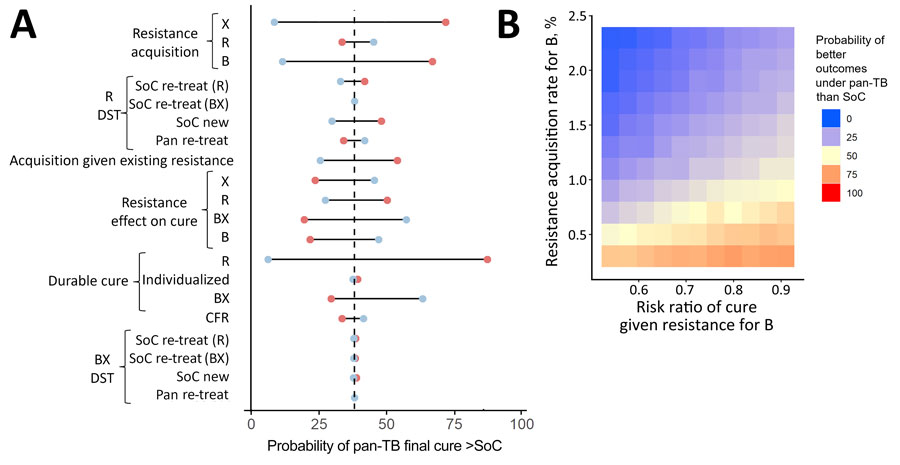Disclaimer: Early release articles are not considered as final versions. Any changes will be reflected in the online version in the month the article is officially released.
Volume 30, Number 8—August 2024
Research
Potential of Pan-Tuberculosis Treatment to Drive Emergence of Novel Resistance
Figure 4

Figure 4. Sensitivity analysis for TB treatment regimen comparison after use in multiple patient cohorts in study of potential of pan-TB treatment to drive emergence of novel resistance. Comparison shows an outcome of proportion of patients durably cured in the 10th cohort when using either the pan-TB or the SoC approach for 10 cohorts. A) Univariate sensitivity analysis, sampling parameter sets with 1 parameter fixed at an extreme of its 95% CI, where blue circles indicate high parameter values and red circles low parameter values. B) Multivariate sensitivity analysis varying 2 resistance-related parameters simultaneously, where red indicates when pan-TB TB regimen performs better and blue when SoC regimen performs better. B, diarylquinolines; BX, diarylquinoline- and novel drug X–containing regimen; CFR, case-fatality ratio; DST, drug susceptibility testing; R, rifamycins; re-treat, those with previously treated TB; SoC, standard of care; X, additional novel drug X.